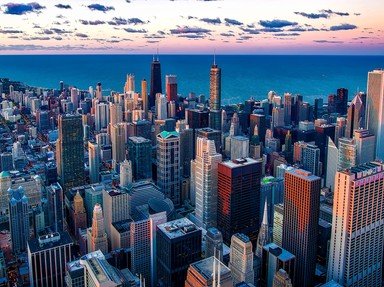Quiz Answer Key and Fun Facts
1. PART A: Early Days
London's fascination with tall buildings started before most cities even existed. As early as the 11th Century, the White Tower associated with this iconic castle was Britain's tallest structure. What is (yes it still exists!) this iconic London landmark?
2. In 1310, London's first building more than 100m tall was completed. What was the name of this building?
3. In 1894, the London Building Act prohibited buildings over 80ft tall, and became law because of Queen Anne's Mansions, an apartment block in Westminster that was over 100ft tall. That in itself was not a problem but it was when it blocked Queen Victoria's view of what?
4. Part B the Modern Era
After restrictions put in place in the 1890s were rescinded, the first building built that exceeding the height of St Paul's Cathedral was completed in 1964. Originally called the GPO tower, later the BT Tower, how tall is the main structure?
5. While progress on a London skyscraper skyline was slow once the 1984 height restrictions were lifted, one area that took off in the early 21st century with a flurry of skyscrapers being built was just to the east of the financial district. Known once as Docklands, what is this skyscraper-strewn area now known as?
6. Pictured is one one of London's most distinctive skyscrapers. Located at 30 St Mary Axe, it has acquired a nickname. Which of the following is it?
7. 110 Bishopsgate (unofficially The Heron Tower) was the tallest building in the City of London financial district when completed in 2011. Before it could be built it had to overcome a major obstacle which was?
8. 122 Leadenhall Street, (officially the Leadenhall Building), is a 225 m (737 ft) high skyscraper in central London. However it is more commonly known by a nickname which is?
9. Old and new: The skyscrapers of the financial district of the City of London as a backdrop to the Tower of London is pictured. What is the colloquial name for the skyscraper on the left of the photo?
10. The Shard is a skyscraper on the South bank of the Thames River near Guy's Hospital. True of False: It was the first UK building to surpass 300 metres or 1000 feet.
Source: Author
1nn1
This quiz was reviewed by FunTrivia editor
stedman before going online.
Any errors found in FunTrivia content are routinely corrected through our feedback system.

